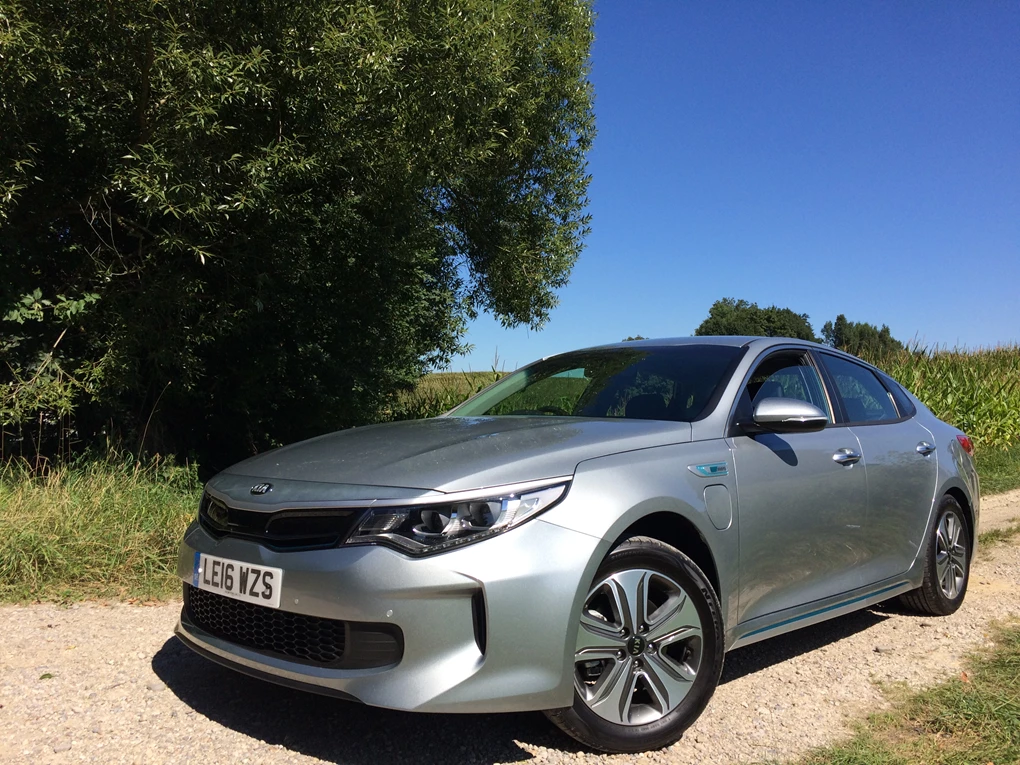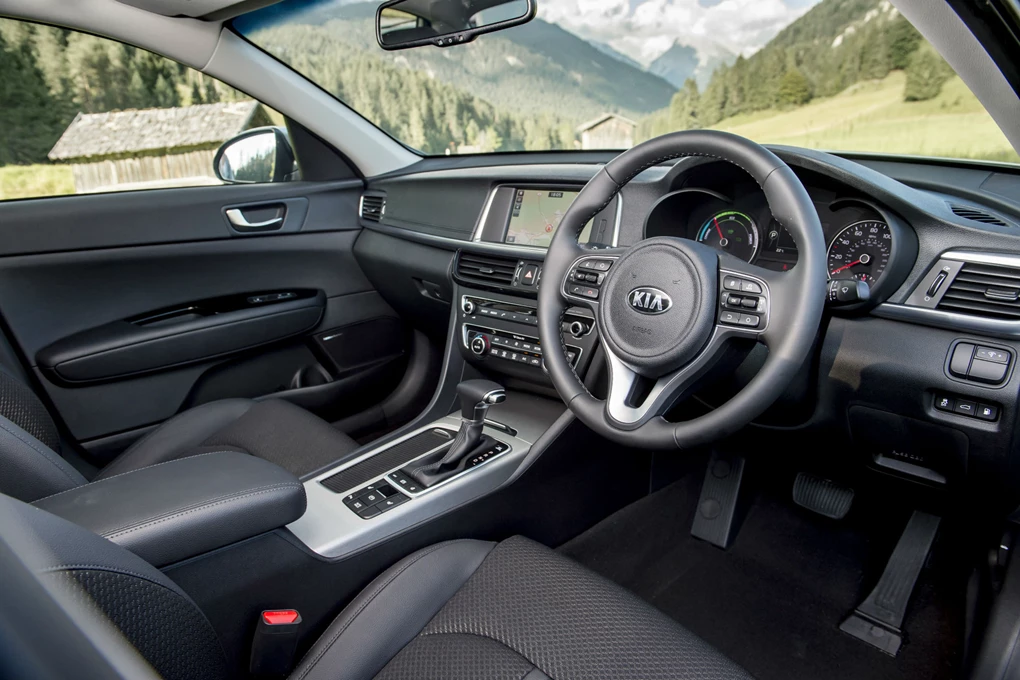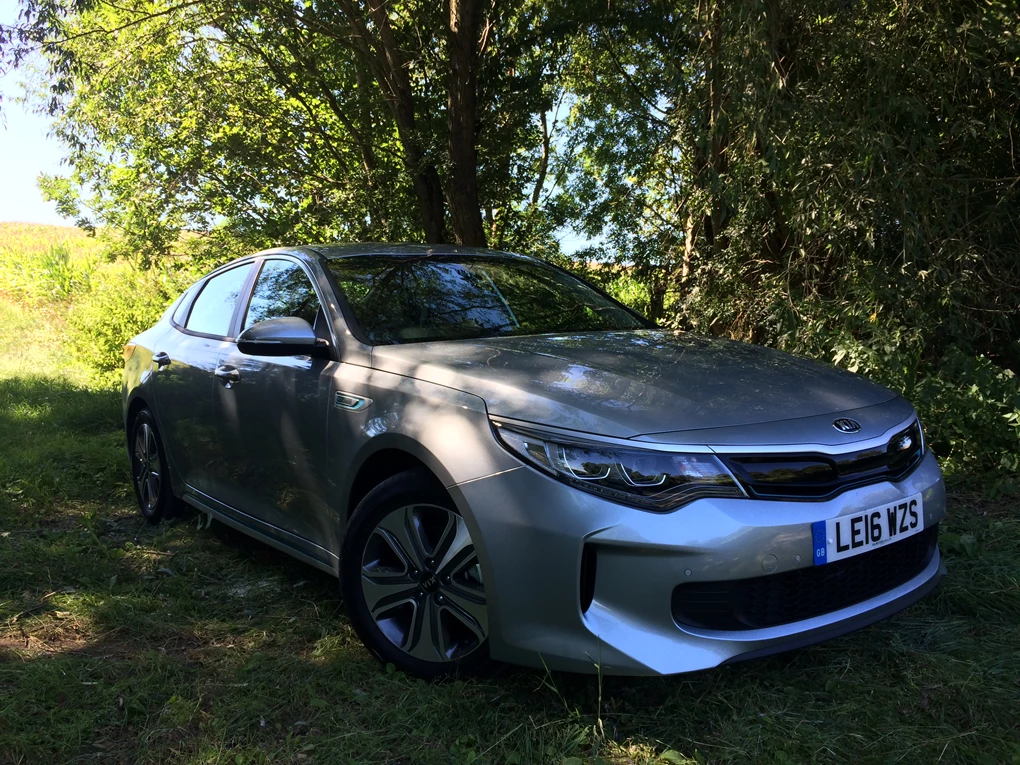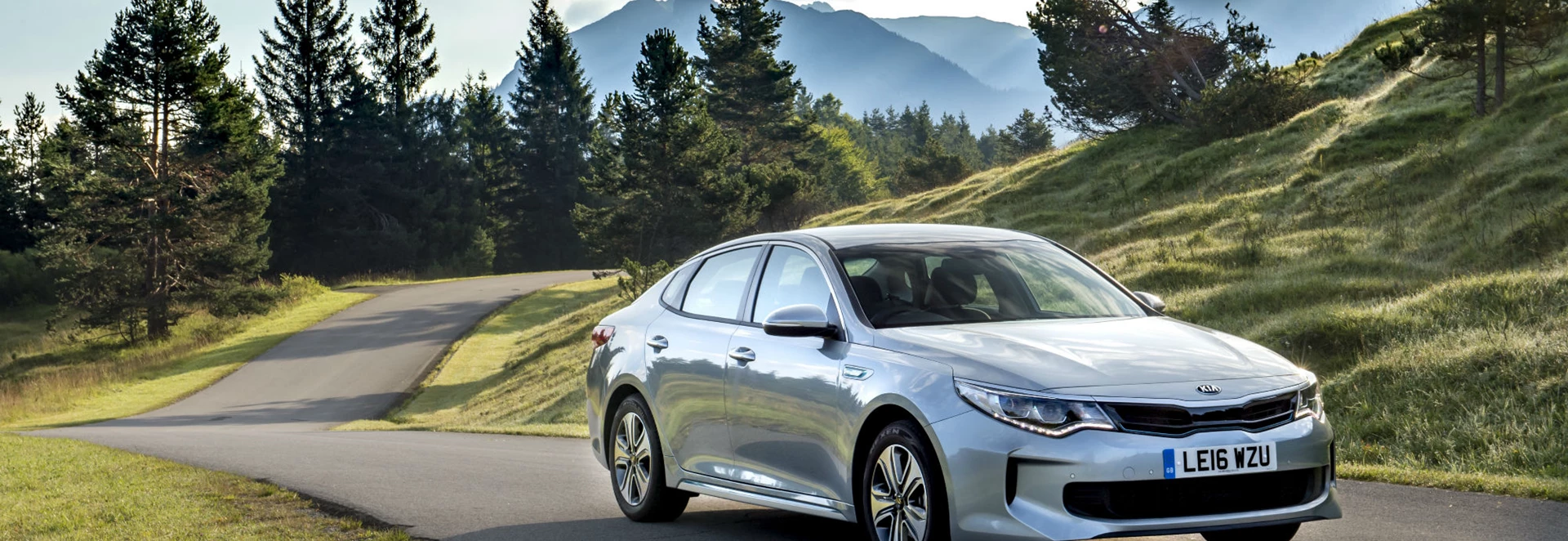As emissions regulations get ever more stringent, hybrid vehicles have gone from niche alternative to an absolute essential in any growing car manufacturer’s arsenal. In addition to its all-electric Soul EV and the new Niro hybrid crossover, Kia now offers a PHEV version of its Optima saloon.
The first plug-in hybrid in the Korean manufacturer’s range, the Optima PHEV is certainly striking to look at with its i8-style plastic grille, and good looks have always been a strong point for the new Optima.
However, against rivals like the Mondeo and Passat the Optima has come up slightly short. But, with a claimed economy rating of nearly 177mpg, can the Optima PHEV tempt eco-conscious drivers to Kia’s range?

Performance
The major talking point of the Optima PHEV is, of course, its plug-in powertrain, which matches a 9.8kWh lithium-ion battery pack and a 67bhp electric motor with a 158bhp 2.0-litre petrol engine.
Due to the fact that it’s a plug-in, the Optima PHEV runs primarily on its electric motor, which Kia claims can power the car for 33 miles and reach speeds of 75mph alone. The petrol engine kicks in under harder acceleration to generate a maximum output of 202bhp with 375Nm of torque.
Despite the numbers, the considerable 1,780kg weight of the car means that it doesn’t feel quite as quick as you might imagine, particularly once you get past 70mph or so. Officially, 0-62mph takes 9.4 seconds but it feels a bit longer than that in person, while the torque doesn’t give you that immediate shove in the small of your back like other electric cars and hybrids.
The petrol engine takes a while to kick in, which is both a pro and a con. It means that the car is a more dedicated hybrid and will try to stay in electric mode wherever possible, but if you’re looking to get anywhere quickly you might be waiting for a while.
Speaking of electric mode, if you’re travelling in pure EV mode instead of the HEV mode, which allows the petrol engine to assist the batteries, your range will dip pretty quickly. That 33-mile electric only range seems pretty optimistic, unless you’re travelling constantly downhill.

Ride and Handling
For longer journeys the car’s setup would serve it well, but the car’s thirst for battery power will limit it to short stretches.
In order to compensate for the extra weight of the hybrid powertrain, the Optima PHEV has a significantly revised suspension setup over the regular car. As a result, it feels markedly different on the road, but all the same suffers from many of the same problems which plague its combustion-engined siblings. The steering is a little bit wishy washy, which gives a distinct feeling of disconnect from the road, while that revised suspension means that the car pitches and rolls throughout the corners. To package the car’s battery pack more efficiently, the entire petrol engine and the gearbox have been shifted over the front axle, meaning that it’s prone to understeer in the slightest bend. To its credit, the car is comfortable and travels across surfaces relatively hassle free. For longer journeys the car’s setup would serve it well, but unfortunately the car’s thirst for battery power will limit it mostly to short stretches. Do bear in mind that so far we’ve only had the opportunity to drive the Optima PHEV on the flawless tarmac of Bavaria, which makes it a little harder to gauge how the car behaves back home on British roads. However, it’s clear that while appealing to buyers who want to travel in comfort, its rivals have it outgunned in terms of dynamics.

Interior and Equipment
The Optima PHEV has a super-slippery drag coefficient of just 0.25, making it more aerodynamic than even the Nissan GT-R.
Unlike some hybrid and electric models, which can make too much of a show about the fact that they’re electrically powered, the interior of the Optima PHEV is happily almost identical to the regular Optima range. There’s only one trim option available, but it comes jam-packed with kit which includes electrically adjustable leather seats, a Kardon premium sound system and a 270-degree surround view camera, along with an eight-inch touchscreen infotainment system which supports Android Auto and Apple CarPlay. There are a couple of exclusive touches though and we particularly like the unique dial in the instrument cluster, which sits in place of a rev counter and swings to tell you whether you’re in all-electric mode, using the engine or charging the battery via Kia’s regenerative braking system.
Cost
Like all other Kia cars, it also comes with the manufacturer’s industry leading seven-year, 100,000-mile warranty for added peace of mind.
All that kit will come at a cost, however, with the Kia Optima PHEV priced from £31,495 in the UK when taking the government’s £2,500 plug-in car grant into consideration. That makes it considerably more expensive than the regular Optima, which is priced from £21,895, making it around £3,000 more expensive than the Ford Mondeo hybrid. However, it does significantly undercut the Volkswagen Passat GTE, which is priced from around £35,000. Do bear in mind the Kia’s claimed economy rating of 176.6mpg and CO2 figure of 37g/km will make for low running costs and will also be attractive for fleet and business drivers. However, we’ve yet to test the Optima PHEV in the UK to see whether those numbers stand up. Like all other Kia cars, it also comes with the manufacturer’s industry leading seven-year, 100,000-mile warranty for added peace of mind.
Our Verdict
Much like the regular Optima, the PHEV version isn’t perfect but is certainly going in the right direction and offers a promising look at the future for Kia’s range. It’s certainly comfortable, it’s well-equipped and to our eyes it’s quite possibly the best looking car of its kind, but its impressive economy claims are dulled slightly by an underwhelming driving experience. All the same, for some buyers and for fleet drivers in particular, it could be the pick of the bunch and is certainly worth a look if a hybrid saloon is on your radar.





